The Microbial Contribution To Regenerative Farming
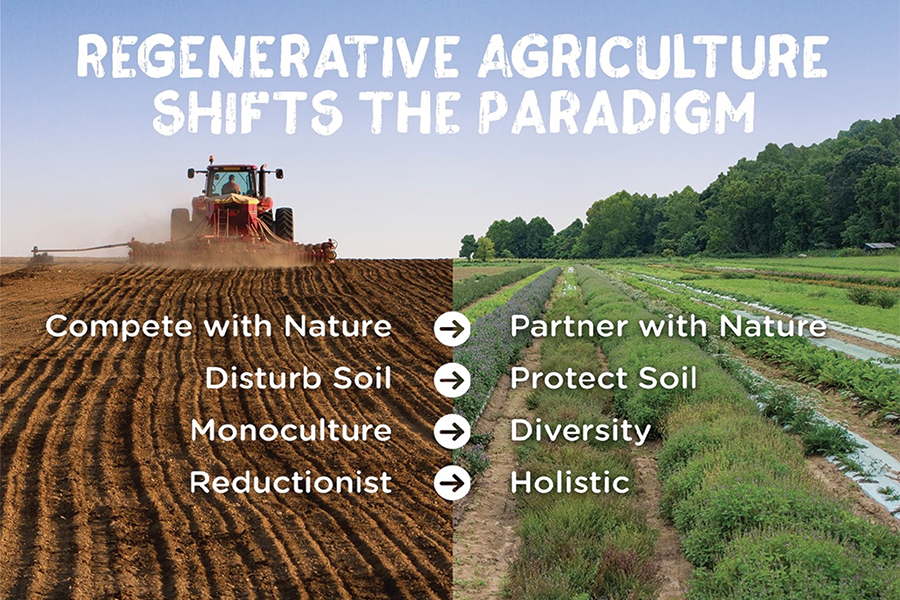
Written Summary of a webinar ”The Microbial Contribution to Regenerative Farming” presented by Dr. Mary Cole
Depletion of Nutritional Value in Food
Helen and Hugo from Farming Secrets welcomed Dr. Mary Cole from Agpath laboratories, who presented on the depletion of nutritional value in food due to the use of synthetic chemicals in agriculture. Dr. Cole highlighted the work of David Thomas, which showed the decrease in essential nutrients and minerals in fruits, vegetables, and meats since the post-World War II era. She pointed out that the addition of synthetic chemicals to produce bigger and better crops does not necessarily lead to more nutritious food, instead it dilutes the nutritional value.
Conventional Agriculture’s Negative Impacts Discussed 4.09min
Dr.Mary Cole discussed the negative impacts of conventional agriculture on the environment and human health. She highlighted the loss of diversity in plant species and soil microbiology, leading to reduced resilience and increased vulnerability to pests and diseases. She also pointed out the depletion of soil organic matter, nutrients, and water-holding capacity due to destructive farming practices. She contrasted this with a more holistic, diverse, and biologically-based approach to farming, emphasizing the importance of preserving soil health and microbial diversity for sustainable food production. She also mentioned the high costs and health risks associated with conventional agriculture, including the increasing rates of farmer suicide.
Regenerative Agriculture and Its Benefits10.27
The doctor discussed the benefits of regenerative agriculture, emphasizing its potential to increase productivity, improve soil health, and enhance nutritional value. He highlighted the role of mycorrhizal fungi in producing biomass that aids in carbon capture, water retention, and the suppression of plant diseases. The doctor also pointed out the economic advantages for farmers, as regenerative methods require fewer inputs, thereby reducing costs and allowing for a better quality of life. He stressed the importance of regenerative farming for a sustainable future and the need to provide farmers with the necessary tools to adopt these practices.
Regenerative Agriculture and Soil Microbiology 14.39
The doctor discussed the importance of soil microbiology in regenerative agriculture. He emphasized that a diverse microbiome enhances the capacity of crops to deal with climate change and suppresses weedy species. He explained the soil food web, highlighting the roles of bacteria, fungi, protozoa, nematodes, and earthworms in breaking down organic matter and making nutrients available to plants. The doctor stressed the importance of maintaining a balance between mineralization and immobilization of nitrogen in the soil for optimal plant health. He also pointed out that the farm has been practicing regenerative agriculture for 55 years, resulting in a spongy pasture with no weeds and high organic matter.
Improving Soil Health With Mycorrhizal Fungi 20.43
Dr. Cole discussed the importance of mycorrhizal fungi in soil health and the negative impact of conventional farming practices on this delicate ecosystem. She emphasized the need to minimize soil damage during crop production, maintain fungal biomass through pasture cropping, and increase microbial populations for improved soil health. Dr. Cole also highlighted the detrimental effects of synthetic chemicals on soil health and urged for their reduction or elimination. He suggested that diversifying above-ground and below-ground plant life, and implementing rapid crop rotation, could help restore balance to the soil.
Restoring Soil Health With Pasture Cropping 29.45
Mary highlighted the damaging effects of synthetic inputs and tillage on the soil, leading to a loss of productivity and diversity. She proposed a shift towards pasture cropping, which reduces carbon loss and increases water efficiency by up to 25%. She also emphasized the importance of mycorrhizal fungi in retaining nutrients and carbon in the soil, and the value of using “weed” species as indicators of nutrient deficiencies in the root zone. Mary urged the need to respect the soil and its microbes, as they are essential for healthy plant growth, animal health, and human well-being.
Looking to Grow an Millions of Soil Microbes?Grab this super deal!
Q & A
Industrial Farming, Soil Health, and Regeneration 41.07
David Davenport
Hi from Eyre Peninsula. Most farmers have adopted no-till and stubble retention, some upwards of 30 years. However, we are seeing increasing levels of nutrient and particle size stratification in conventional rotations. On these soils we are seeing crop responses to deep ripping with subsequent tillage to break up clods and level. My view is that in the absence of perennial species we need to undertake some deep mixing (30 cms +) perhaps once every 10 years. The proviso is that mixing needs to involve either green or brown manuring i.e. mixing in more OM than could be expected to be burnt off during a tillage operation. What is the likely impact on soil biological populations
In response, Dr.Cole suggested the use of multi-species crops to build up organic matter and microbiology in the soil, and emphasized the importance of producing more nitrogen than is taken off in crops. The conversation also touched on the challenges of regenerating pastures for graziers, with Dr. advising on the benefits of rotational grazing and biological tillage.
Impact of UV Light on Microbial Populations 45.33
Amanda asked about the impact of UV light on microbial populations in compost extracts and teas. The doctor explained that live microbes, including bacteria and fungi, require a molecular layer of water to regenerate and suggested applying these products in the cool of the evening or early morning to allow the microbes to establish on a surface before the sun’s heat kills them off. In response to Vanessa’s question about purchasing products containing bacteria and fungi for soil population increase, the doctor expressed skepticism about the efficacy of such products, suggesting that the value may come more from the nutrient-rich carriers than from the microbes
themselves. He recommended making one’s own compost to increase the microbiology.
Trialing Products, Improving Soil Health, and Broad-Acre Farming 54.11
Helen emphasized the importance of trialing new products and methods to determine their effectiveness. Mary discussed the challenges and opportunities of broad-acre farming, particularly in relation to soil health and the use of animals. She suggested strategies such as pasture cropping and using compost tea to improve soil health. Katharine asked about the principles of soil health for systems without animals and how to introduce or improve microbiology in soil. Dr. responded by highlighting the potential of using legume crops and compost tea. The discussion was set to continue with Terry sharing his experiences from sandy country during the winter growing season.
Improving Soil Health and Crop Production 59.14
Terry and Dr Cole discussed strategies for improving soil health and crop production in dry, sandy environments. Dr shared her experience of using biodynamic farming methods in Egypt and in the UAE, emphasizing the importance of adding clay to the compost and growing multi-species crops to build up organic matter. Terry mentioned their own efforts to bring clay to the surface through ripping. Dr Cole also advised trying different methods in the worst piece of land to see what works best. Additionally, Dr shared that she has started writing four books on the subject but has not had the time to finish them due to her busy schedule.
Improving Soil Health for Better Crop Yields 1.04.31
Dr. Cole discussed the importance of improving soil health for better crop yields. She emphasized that farmers should focus on nurturing the soil first, rather than what they can take off the farm. She shared examples of farmers around the world who have successfully improved their soil and crop yields using unconventional methods, such as washing seeds to remove chemical coatings and making compost from date palm trash. Gael, another participant, asked about using these methods to control weeds like poa tussock, to which Dr. Cole suggested using a yeoman’s plow to break up the weeds and planting native species to compete with them.
Soil Health, Worm Farms, and Mycorrhizal Fungi1.11.58
Helen led a discussion on the importance of soil health and the use of compost and worm farms for soil improvement. Jim shared his experiences with worm farming and Dr. confirmed the benefits of using worm compost, emphasizing the need for dilution due to its high nutrient content. The group also discussed the work of David Davidson, a renowned worm farmer, and his use of recycled commercial waste. The next webinar, focusing on mycorrhizal fungi, was announced for the following month. The conversation ended with an emphasis on the importance of respecting and appreciating soil microbiology for human health.
Next Steps
1. Farmers to consider implementing pasture cropping and multi-species cover crops to improve soil health and biodiversity.
2. Farmers to explore making and applying compost teas using on-farm materials to enhance soil microbiology.
3. Farmers to minimize tillage and consider using tools like the Yeoman’s plow for minimal soil disturbance.
4. Farmers to aim for 100% ground cover 100% of the time to protect and nurture soil biology.
5. Farmers to trial different regenerative practices on small areas of their farms to determine what works best for their specific conditions.
6. Farmers to consider incorporating clay into sandy soils to improve nutrient and water retention.
7. Dr. Mary Cole to conduct a follow-up webinar on mycorrhizal fungi.
To watch the webinar presentation go here:

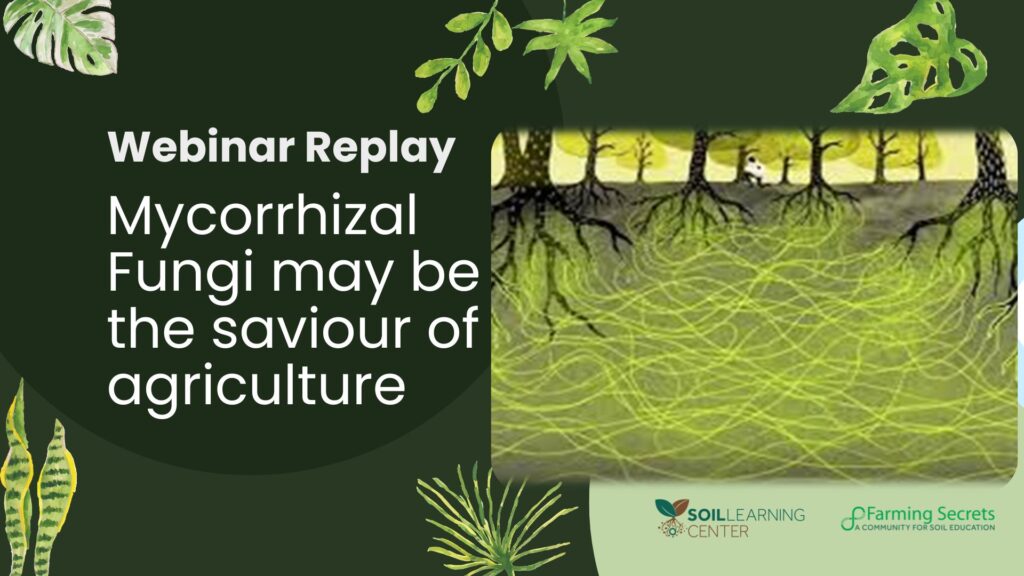
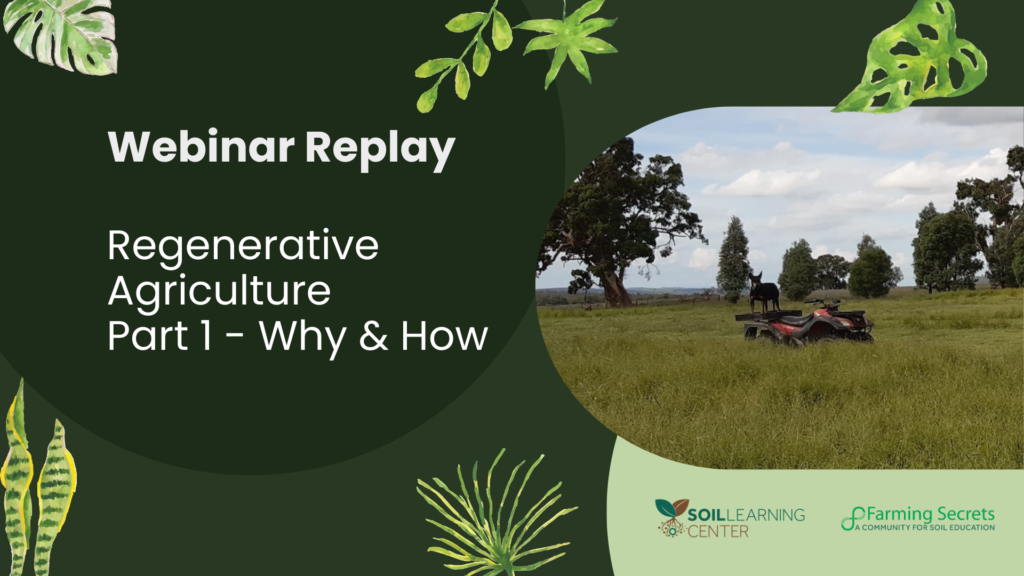

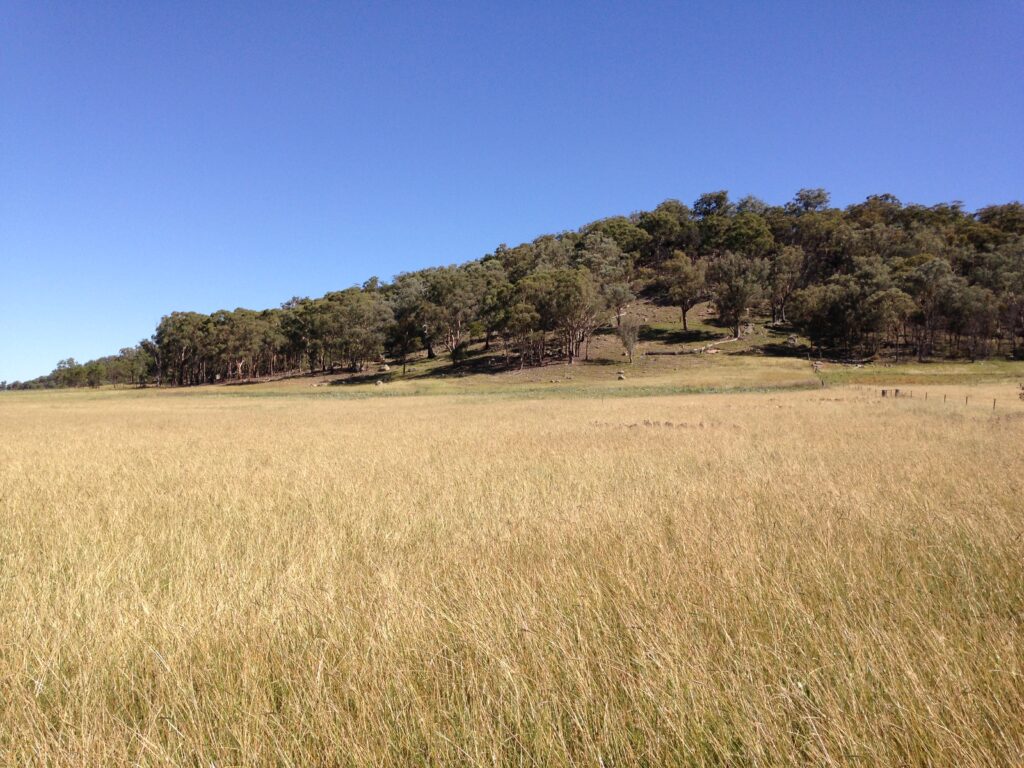
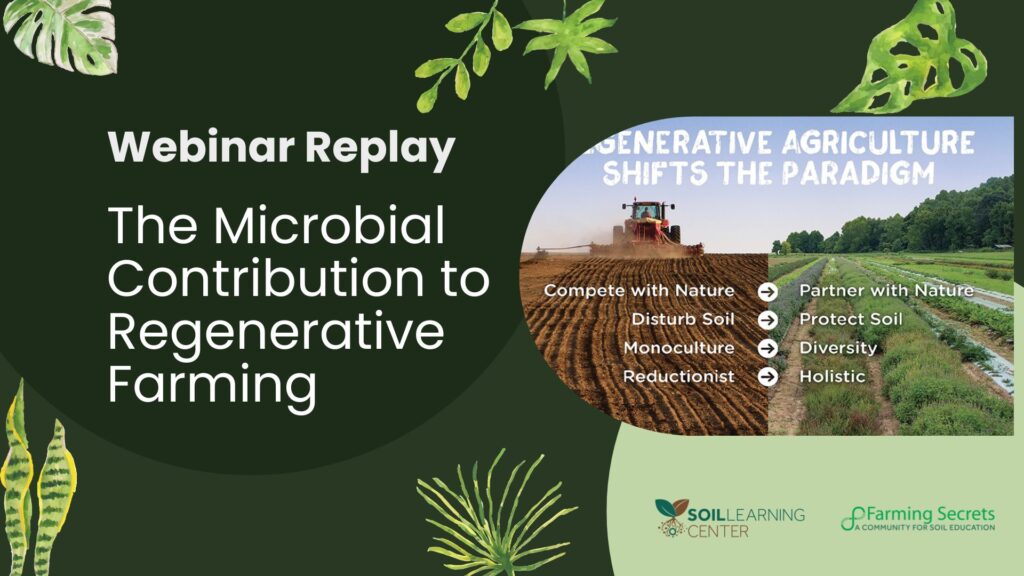

Responses